Use email in your marketing? Wondering how an email sequence can help turn people into customers?
In this article, you'll learn about an email sequence that creates genuine loyalty and grows sales. You'll also discover how to recycle this email system to stay engaged with your audience over time. Finally, you'll find out how to re-engage people on a list you haven't emailed for a while.
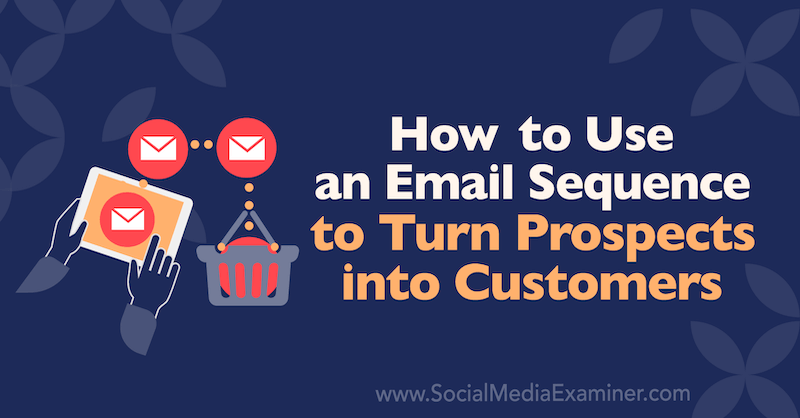
To learn a six-step email sequence to nurture people from prospects to customers, read the article below for an easy-to-follow walkthrough or watch this video.
Why You Need an Email Nurture System
When you think about somebody entering your email list, consider the journey you want to bring them on to build trust, familiarity, and excitement, and get them to want to buy your products or services. Creating an email sequence that nurtures your audience will make it easier to convert them into purchasers and measure what's working and not working so you can scale your system.
There are six emails you need to include in your email sequence every month. I call these emails your “permission sandwich” because you repeat them over and over again. You can take these same six templates and infuse them with different kinds of training, features, and permissions over time to nurture your audience.
In fact, my favorite seven-figure clients have a whole year of permission sandwiches. Each month, they have two cycles of six, and at the end of that month, they either do a 1-day flash sale or a 6-day longer sale. This is a great cycle where you know exactly what you need to write in exactly what order to nurture your audience over a period of time.
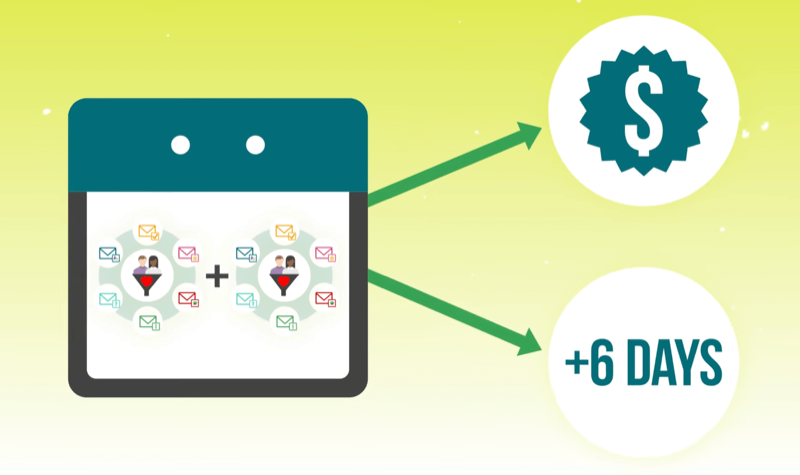
Now let's look at the six emails you need to include in your email sequence to build loyalty, generate engagement, and make sales.
#1: Permission Emails
The first email in the sequence is your permission email, which helps show your audience that they belong. This is important because they get a lot of emails from many different people. When they get an email from you, you want them to feel like they're hearing from a friend, somebody who really gets them.
What does a permission email look like? One example my company uses is that sometimes your life is in chaos and you're barely keeping it together. The permission we're giving people is not to be perfect, maybe to cry in the bathroom because your kids won't put their shoes on, but then hop on a client call 2 hours later and be razor-sharp.
Giving people permission to be imperfect lets them know that they belong in your community and they're going to stick around longer because of that.
#2: Clout Emails
Next up are clout emails. These emails are important because they show your audience you're somebody worth listening to.

Discover Proven Marketing Strategies and Tips
Want to go even deeper with your marketing? Check out the Social Media Marketing Podcast! Publishing weekly since 2012, the Social Media Marketing Podcast helps you navigate the constantly changing marketing jungle, with expert interviews from marketing pros.
But don’t let the name fool you. This show is about a lot more than just social media marketing. With over 600 episodes and millions of downloads each year, this show has been a trusted source for marketers for well over a decade.
There are two ways to do clout emails. One approach is to include an email about your authority platform, whether it's a podcast, YouTube channel, or blog. The other way is to show that you've been featured. Both of these tactics show your audience that you're an expert in your space and somebody they should listen to.
Get World-Class Marketing Training — All Year Long!
Are you facing doubt, uncertainty, or overwhelm? The Social Media Marketing Society can help.
Each month, you’ll receive training from trusted marketing experts, covering everything from AI to organic social marketing. When you join, you’ll also get immediate access to:
- A library of 100+ marketing trainings
- A community of like-minded marketers
- Monthly online community meetups
- Relevant news and trends updates
#3: Training Emails
The third kind of email in this sequence is a training email, which is one you likely send most often. It's where you fill a gap (change your audience's mind about something) or share a hack (show them how to do one particular tactic or strategy).
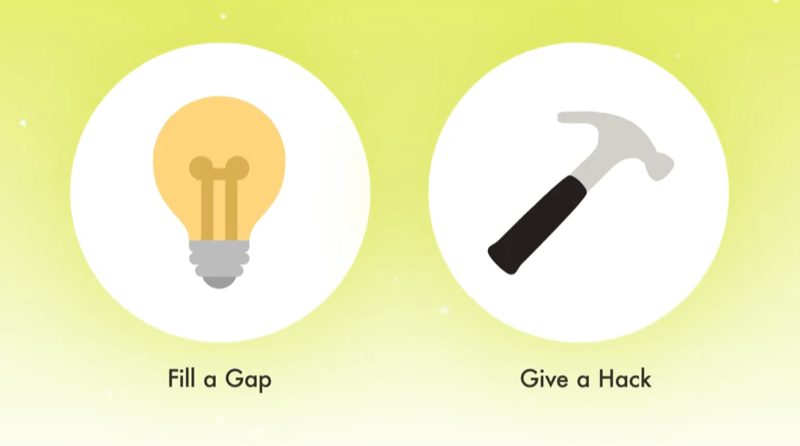
You can either write the training directly in the email or create an email that directs people to a video where you do the training. Either way, this is about showing you in a teaching mode.
#4: Recommendation Emails
Recommendation emails introduce a different product to your audience. Maybe it's a book or product you love, or another person and their products and services you're excited about. This email is a great place to make use of affiliate links.
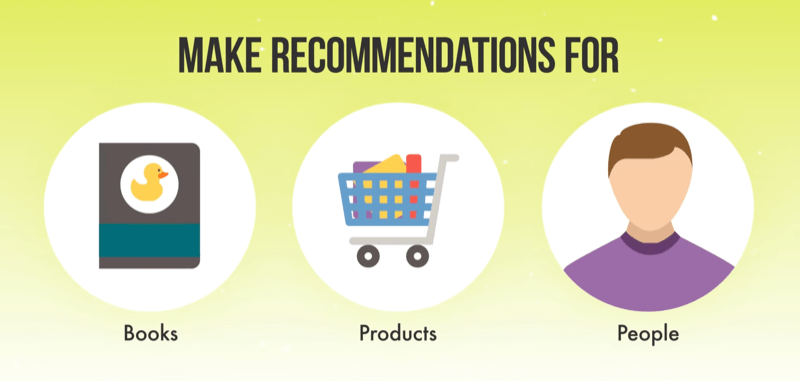
Recommendation emails show you care about more than just about selling your products and services. And if people should love the book or buy the product you recommend, they'll associate you with that result as well. It's a win-win. It also helps move you into the next one: ask emails.
#5: Ask Emails
The ask email is where you actually ask people to buy your product or service. Most businesses don't do this. They're either just sending out a newsletter or sporadically asking for a sale.
#6: Feedback Emails
Once you've sent the ask email, you move on to the feedback loop. The feedback email is important because after you've asked people to buy something, you'll want to solicit their opinions to show you care about what customers think about your products and your brand.
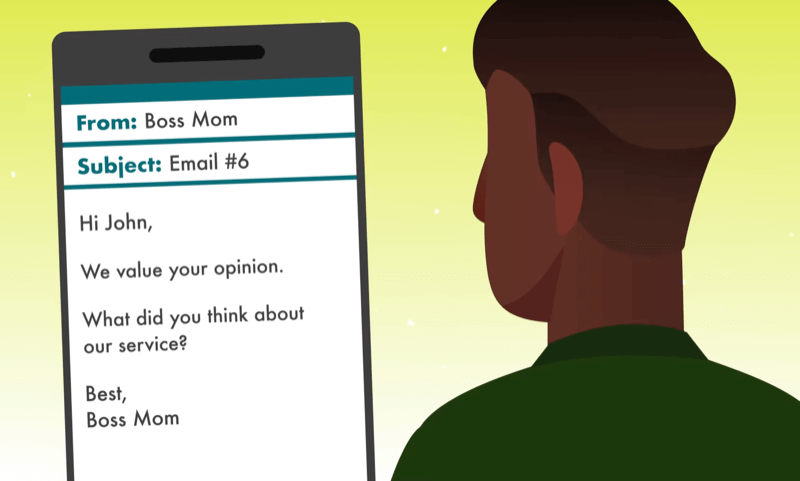
Bonus: How to Reengage a Dormant List
I frequently hear marketers say, “I have people on my email list already but they're not really engaging and I haven't emailed them much.” So how do you reinvigorate that audience? By addressing the elephant in the room. Simply email them and say something like, “I haven't been around much but there are a lot of changes happening in my business right now and you're going to be seeing a lot more of me.”
Conclusion
When you create an email sequence with these six kinds of emails in this particular order, you're more likely to nurture your audience in an authentic and exciting way.
What do you think? Are you inspired to try this email sequence for your business? Share your thoughts in the comments below.
More articles on social media marketing:
- Learn how to grow your email list with Facebook ads.
- Find out how to promote your email opt-in via your Pinterest profile, boards, and pins.
- Discover a step-by-step plan to drive traffic to your opt-in form using Instagram Stories.
Attention Agency Owners, Brand Marketers, and Consultants

Introducing the Marketing Agency Show–our newest podcast designed to explore the struggles of agency marketers.
Join show host and agency owner, Brooke Sellas, as she interviews agency marketers and digs deep into their biggest challenges. Explore topics like navigating rough economic times, leveraging AI, service diversification, client acquisition, and much more.
Just pull up your favorite podcast app, search for Marketing Agency Show and start listening. Or click the button below for more information.

